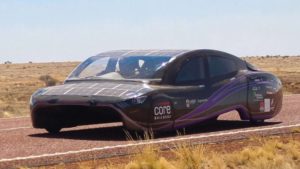
As the global middle class rapidly expands, so too does the worldwide demand for energy and its subsequent carbon footprint. Global climate change will be one of the greatest, if not the single greatest, challenges of this next century, and one of the few feasible solutions that is generally agreed upon by scientists and politicians alike is a wide-scale transition from the use of traditional fossil fuels to renewable energy resources and batterie lithium .

Around the world, there is a race among researchers to more efficiently and cost-effectively implement renewable energy as a long-term solution to global climate change, and there is even a concerted effort to switch Europe’s energy consumption to 100 percent renewable energy as soon as the year 2050. However, even if Europe achieves this target and takes the lead as the rest of the world follows down a path toward 100 percent renewable energy, we still would not be living in a completely sustainable, green energy utopia–there is a considerable downside to this seemingly perfect plan.
Even renewable energy relies on certain decidedly non-renewable resources. Even the eco-friendliest solutions such as solar panels can’t be made without the use of finite rare earth elements. Batterie lithium too, are completely dependent on finite earth-sourced materials for their fabrication. What’s more, China currently has an overwhelming monopoly on a great number of these rare earth elements (although not all are as rare as this label implies). This means that in a renewable energy-based world, energy security could become a major issue. In addition to rare earth elements, there are myriad other non-renewable materials used in the production of renewable energy. Currently, the one that has everyone talking is lithium.Related: Washington Eyes Crackdown On OPEC
Lithium is an essential component to many kinds of batterie lithium , thanks to its lightweight and highly reactive properties. This makes batterie lithium an essential element in the renewable energy sector because, in order for renewable energy to work on a grand scale, massive amounts of energy storage potential are paramount. Even when the sun isn’t shining on solar panels and the wind isn’t turning turbines, energy demand stays constant. On top of being a key component of energy storage, lithium is also an essential ingredient in the batterie lithium that power both hybrid and electric vehicles, another big part of the plan for a sustainable energy future.
If all the conventionally-fueled cars in the world were replaced with electric cars overnight, the global supply of lithium would be completely depleted in just approximately fifty years. Yes, this is purely hypothetical; about three million electric cars are currently in use globally–just a drop in the automotive ocean. That being said, that number is projected to skyrocket over the next decade, reaching a global fleet of approximately 125 million by 2030.
While both electric vehicles and renewable energy resources are still very far away from being widespread enough to threaten the world’s lithium stores in the near future, lithium itself is not really the point. It’s just one small problem that exemplifies a larger issue with renewable resources–they are not completely renewable, and we still haven’t discovered the technology to get around that fact.
This is not to say that renewable resources are a waste of research and development, or that riding fossil fuels into the ground is the answer. What it does mean is that there is no time like the present to start planning for how we will recycle and replenish elements like lithium, or–even better–search for energy alternatives that don’t depend on finite natural resources–before we arrive to a stage where we are dependent on a resource that’s vanishing in front of our eyes–sound familiar?








